As New York's clean energy grid expands, so do the concerns of Mohawk Valley residents
As New York’s clean energy grid expands to meet Gov. Kathy Hochul’s Climate Act goal of zero-emission electricity by 2040, the concerns of local residents, town leaders, lawyers and collegiate students are on the rise.
For decades, rural stakeholders in the Mohawk Valley have been asked to bear the burden of a dirtier downstate grid.
At public forums – such as the Deerfield Climate Presentation on Oct. 17 and Hamilton College's Renewable Energy Fair on Nov. 29 – the topic of citing solar has gained traction.
“And we have no say – these projects just seem to pop up,” said Hamilton College Professor of Government Steve Orvis.
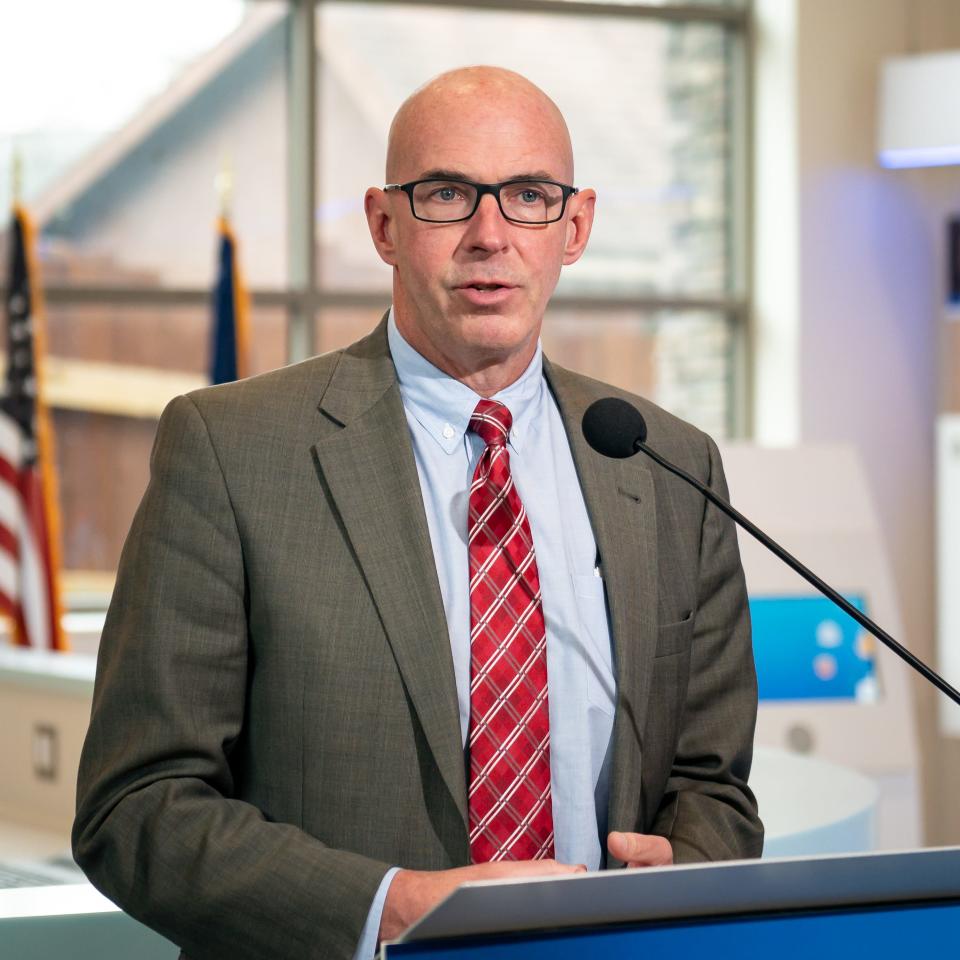
Expanding the clean energy grid
Hochul recently announced the completion of Central East Energy Connect, a 93-mile-long transmission rebuild project. The upgraded power lines – between the town of Marcy and the town of New Scotland in Albany County – carry nearly five times the amount of electricity as the old lines, enough to power approximately two million homes, officials said.
According to a statement by the governor’s office, the project will allow the state to stay on track to meet its clean energy goals of a zero-emission electricity sector by 2040, 70 percent renewable energy generation by 2030, and economy-wide carbon neutrality by mid-century.
New York Independent System Operator (NYISO) President and CEO Rich Dewey praised the completion.
“Most of the low-cost, clean energy is upstate while the bulk of the consumption is downstate," he said. "This project relieves a congested corridor, allowing for power to flow down to New York City.”
Another project, Smart Path Connect, with National Grid between Oneida County and the North Country, is currently in progress and scheduled to be completed in 2025.
Gary Abraham, an environmental attorney in Great Valley NY, had a different reaction.
“New York’s energy policy discriminates against reliable carbon-free energy and bulldozes nature," said Abraham. "True climate leadership creates solutions that don’t destroy rural communities in the process.”
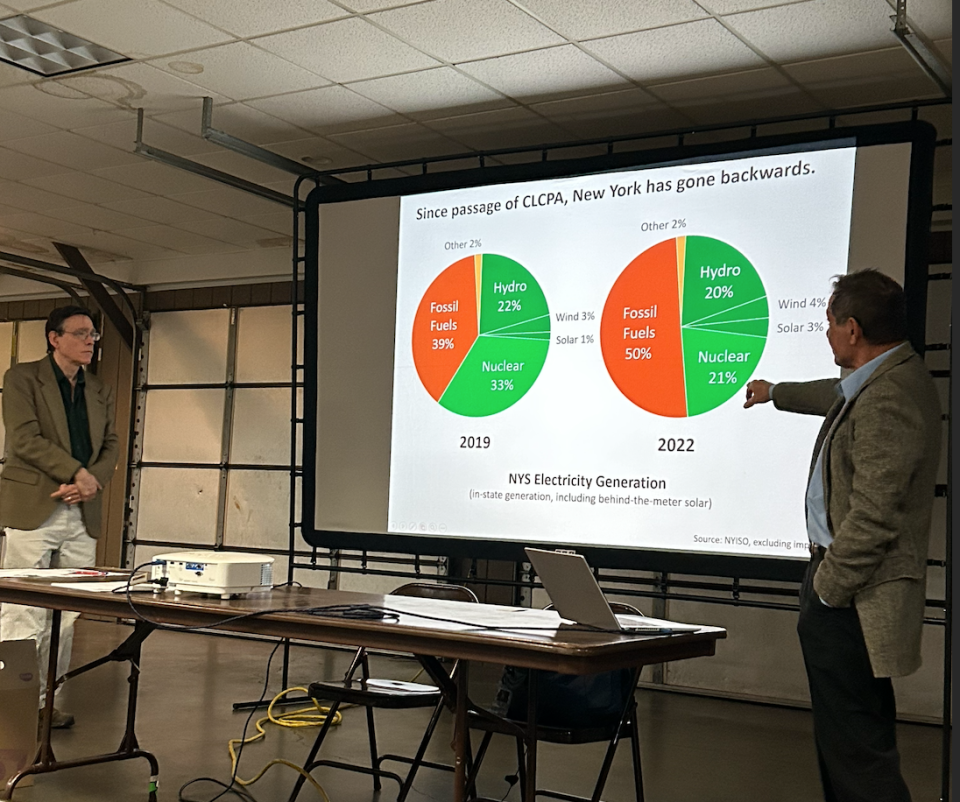
Powering downstate
Dennis Higgins and Keith Schue led Deerfield's Climate Presentation. Shue, winner of the 2020 Constellation Prize for Policy Impact, pointed out that according to NYISO’s 20-year outlook report “clean energy from Central NY won't power New York City.”
NYISO’s 2023 power trend report notes that under federal tariffs the state is obliged to keep New York City’s lights on. The document states that “70% (17,000MW) of fossil fuel capacity will be needed after 2030.”
To accommodate for the intermittent generation of solar energy downstate will still rely on fossil-fueled peaking power plants, Shue explained.
“Every renewable project needs full capacity transmission to a 3-phase line or substation,” added Higgins. “Buildout won’t occur on highway medians, big box parking lots or brownfields. It will happen where transmission is possible, mostly on forested land.”
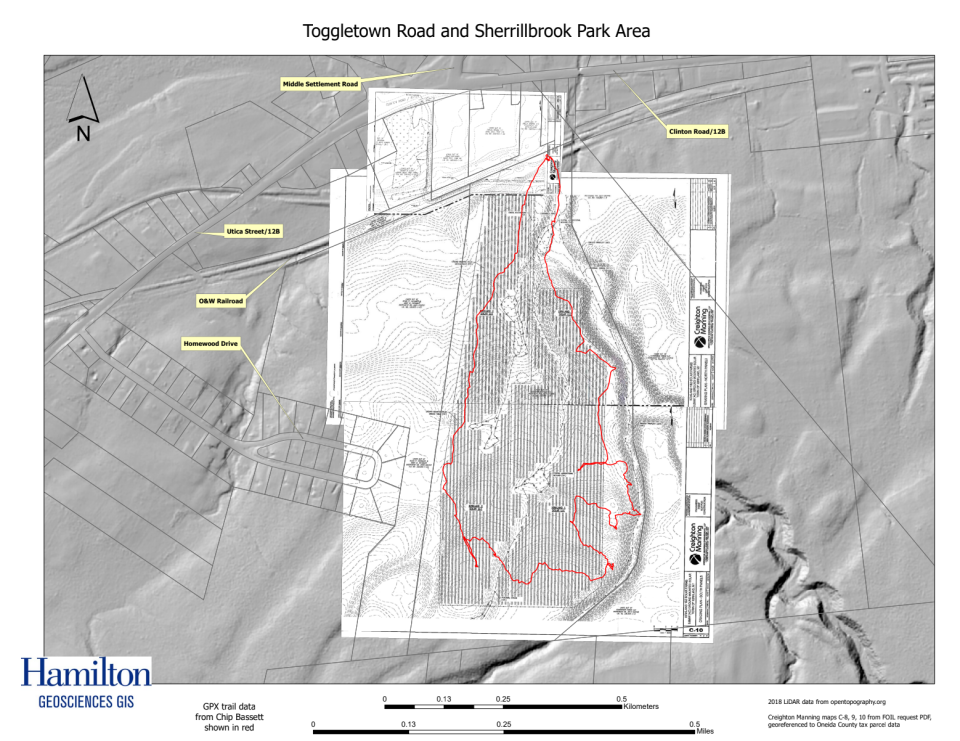
Talk of the town
Recently the Atlas Solar Farm, set to straddle the Kirkland-New Hartford line, has found itself under scrutiny. The 4.6-megawatt project calls for 65 acres of forested land next to Sherrill Brook Park to be cleared. Locals fear potential flooding upstream in the Sauquoit Creek.
The project's final proposal will be submitted in February, opening up the floor to a public hearing. Until then residents can only write letters of concern.
In the meantime, opposition has manifested in the form of a Facebook page called “Slow Solar in the town of Kirkland."
Lia Cagnetta, a senior at Hamilton College, presented the project at the Renewable Energy Fair. In 2021 the land went up for sale at $3,000 per acre; Atlas Renewable upped the price to $8,000 per acre, she said.
Why would a solar company settle on an expensive, forested plot of land when vacant farmlands stretch for miles?
“Fallow farmlands that are flat and cost less don’t have the appropriate access to three-phase transmission lines,” Cagnetta explained.
About the project
Cagnetta's presentation focused on the growing tension between the need for renewable energy development and appropriate sites to do so.
"The Atlas project is worrisome because of the many environmental impacts that come with cutting down a forest," she said. Although the area is situated above the Mud Creek the water flows into the Sauquoit Creek. “So, a project mostly in Kirkland will end up flooding our neighbors to the North, but not us," she added.
Stormwater mitigation is an age-old concern in the Sauquoit Creek Basin Watershed. Uprooting 65 acres of trees will cause compaction, making it difficult for rainwater to infiltrate the soil. Other concerns include habitat fragmentation, loss of carbon sequestration, and the loss of potential recreational land, Cagnetta said.
She proposed the creation of two solar permits. One to specify panel, to help manage run-off water, and another to require space between panels, to allow for plant growth.
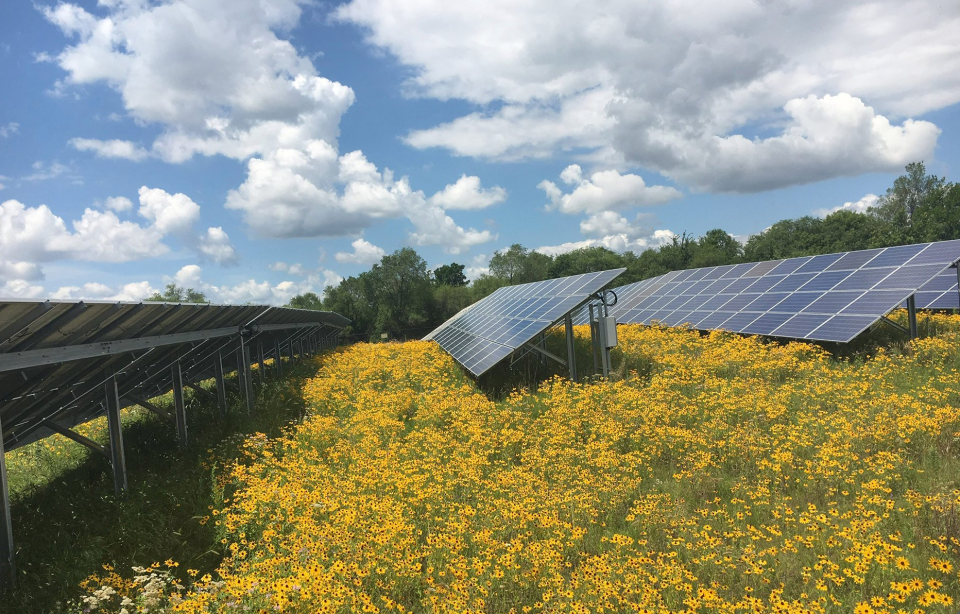
Re-powering is an Environmental Protection Agency (EPA) initiative that encourages renewable energy projects on formerly contaminated lands such as brownfields, super fence cities, modding sites, and landfills.
While Oneida County does not have much contaminated land Cagnetta argued its plethora of farmland could lend well to the practice of agrovoltaics – when solar panels and crops coexist on the same surface.
“Native flowers would attract pollinators– revitalizing lost habitat– and planting perennial crops would enhance soil health– reducing the chance of flooding," she said.
New Hartford Town Supervisor Paul Miscone said he doesn’t see the project passing, “with all of its issues.”
The current project proposal also does not abide by the Kirkland solar ordinance, which advocates for the "protection of wildlife" and advises against tree-cutting.
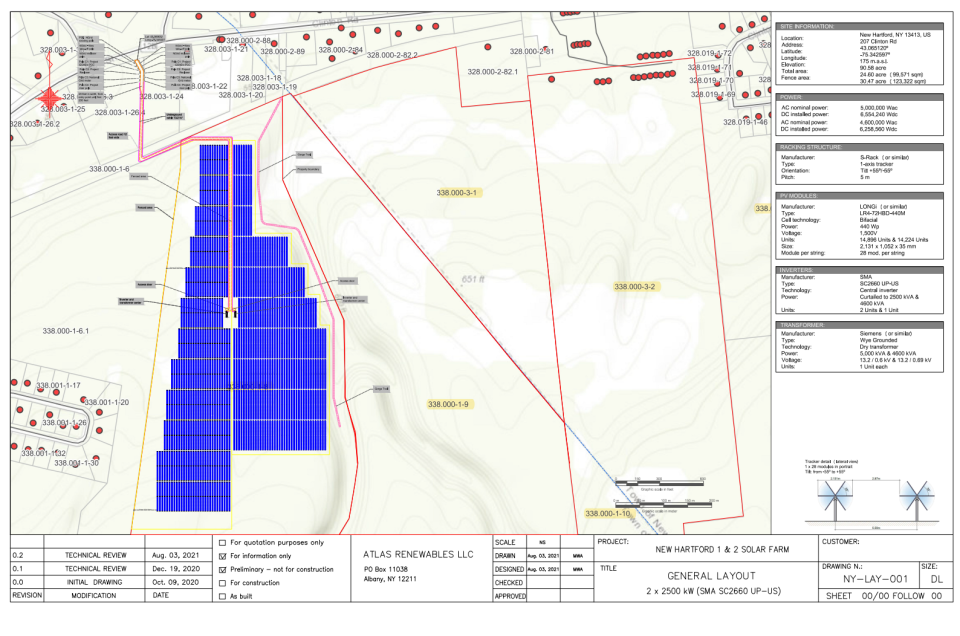
Playing catchup
In 2022, residents of Kirkland proposed the town create a moratorium on approving solar sites and update the masterplan to be “proactive in dealing with solar companies.”
Cagnetta suggested a return to this idea.
“Having a proactive mitigation plan would eliminate this catch-up situation we keep finding ourselves in,” she said.
During the comment section of the Renewable Energy Fair, Professor Orvis added that most residents aren’t even aware the Atlas solar project is "in the works."
Katie Rockford, another senior at Hamilton College, chimed in. She'd conducted a field study and found that 83 percent of the respondents weren't familiar with the project.
“Companies are starting projects without consulting local communities,” said Rockford. “Even though environmental justice claims to be a part of local policy we need to make sure all stakeholders have a place at the table.”
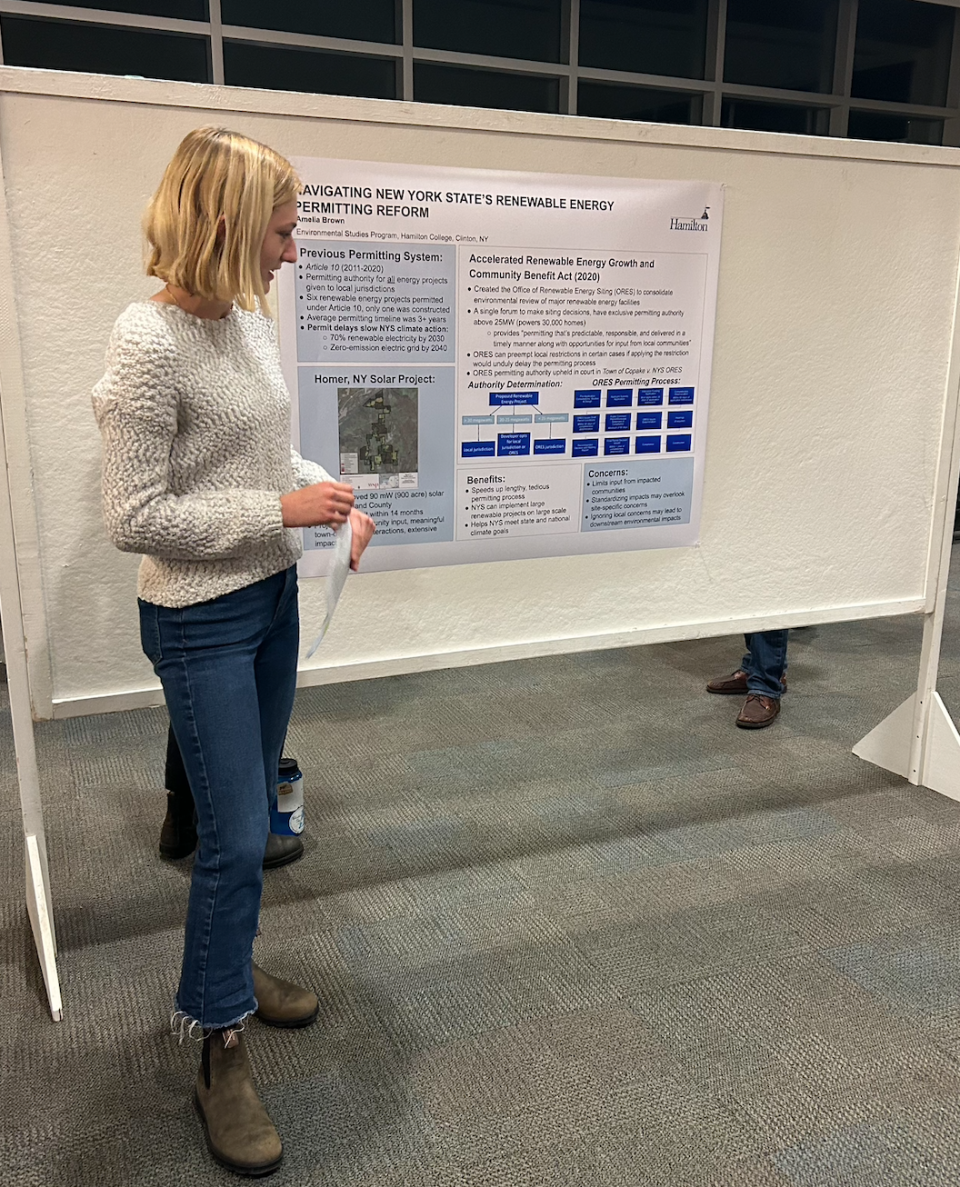
Greg Sacco, a member of the Deerfield Preservation Coalition, said if a project is 25 megawatts or higher it has to be submitted for approval to the New York State Office of Renewable Energy Siting (ORES).
“A developer comes to us after they’ve already spoken to the local township and community members,” said ORES Public Information Officer Nathan Stone.
The Atlas Renewable project, at 4.6 megawatts, means it is not required to submit a proposal to ORES. This is how it was able to gain approval without public consultation.
Rallying together
The community has already joined forces. A group of 17 individuals and two private organizations wrote a joint public filing asking the state to reconsider its renewable plan.
“By embracing a balanced energy plan the state can still meet its climate goals, protect the natural beauty of the landscape, and meet economic needs,” the group wrote. “We urge the Commission to engage in planning based on an appreciation for both urban and rural communities.”
The filing detailed the implications that come with citing solar on forested land. It included a study of 160 utility-scale solar energy (USSE) projects in California.
Researchers with the Carnegie Institute for Science at Stanford and the University of California in Berkley found that most solar projects installed in natural areas, “exacerbated habitat fragmentation that resulted in direct and indirect ecological consequences.”
However, as noted by the New York State Bar Association, developers tend to choose sites where population density, land prices are low, and transmission lines are close.
“This happens to be where New York’s prime agricultural soil is located,” the filing claimed.
Was Canada onto something?
At the Deerfield Climate Presentation Higgins brought up a similar situation a few years back in Ontario, Canada.
“A divisive Green Energy Act pitted the rural north against the wealthier south,” said Higgins. “Leaders recognized their flawed analysis and repealed the act altogether. New legislation now gives Canadian provinces the final say over the siting of future energy projects in their communities.”
During the comment section, Sacco agreed with Higgins' suggestion to look to Ontario as an example.
“People tell me I’m wasting my time, driving 60 miles to speak for five minutes at a legislative meeting, when I could be enjoying my grandchildren," he said. "The thing is, I’m doing this for them. The next generation will bear the load of our failed policy... it’s not too late to pivot.”
This article originally appeared on Observer-Dispatch: Upstate New Yorkers grow weary of state's climate goals

